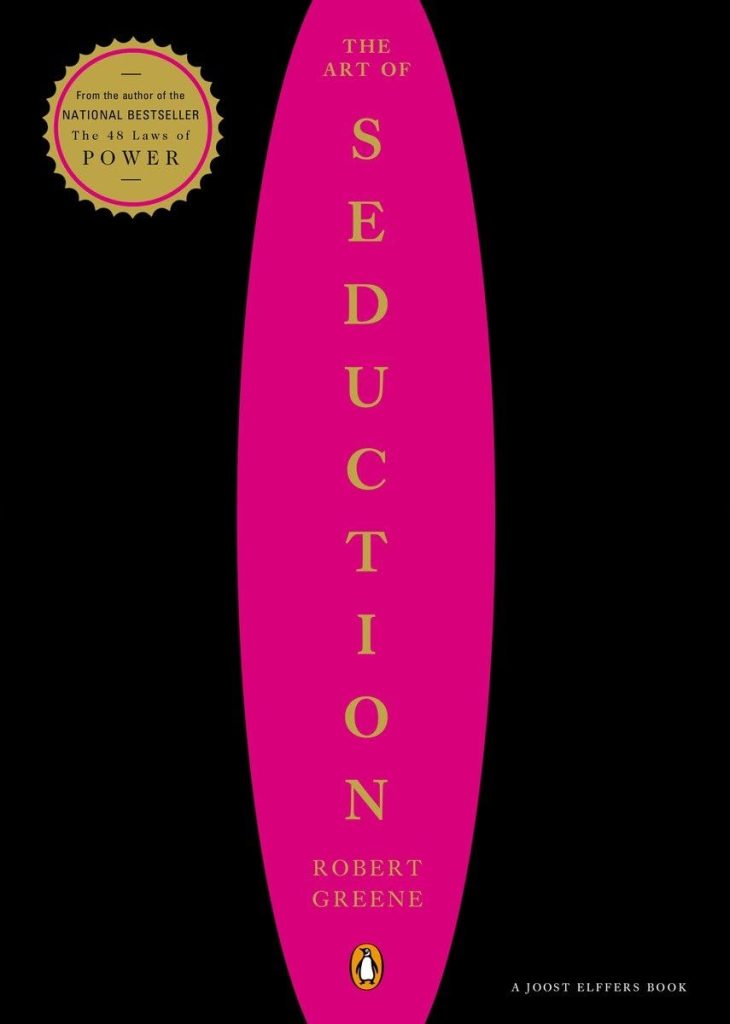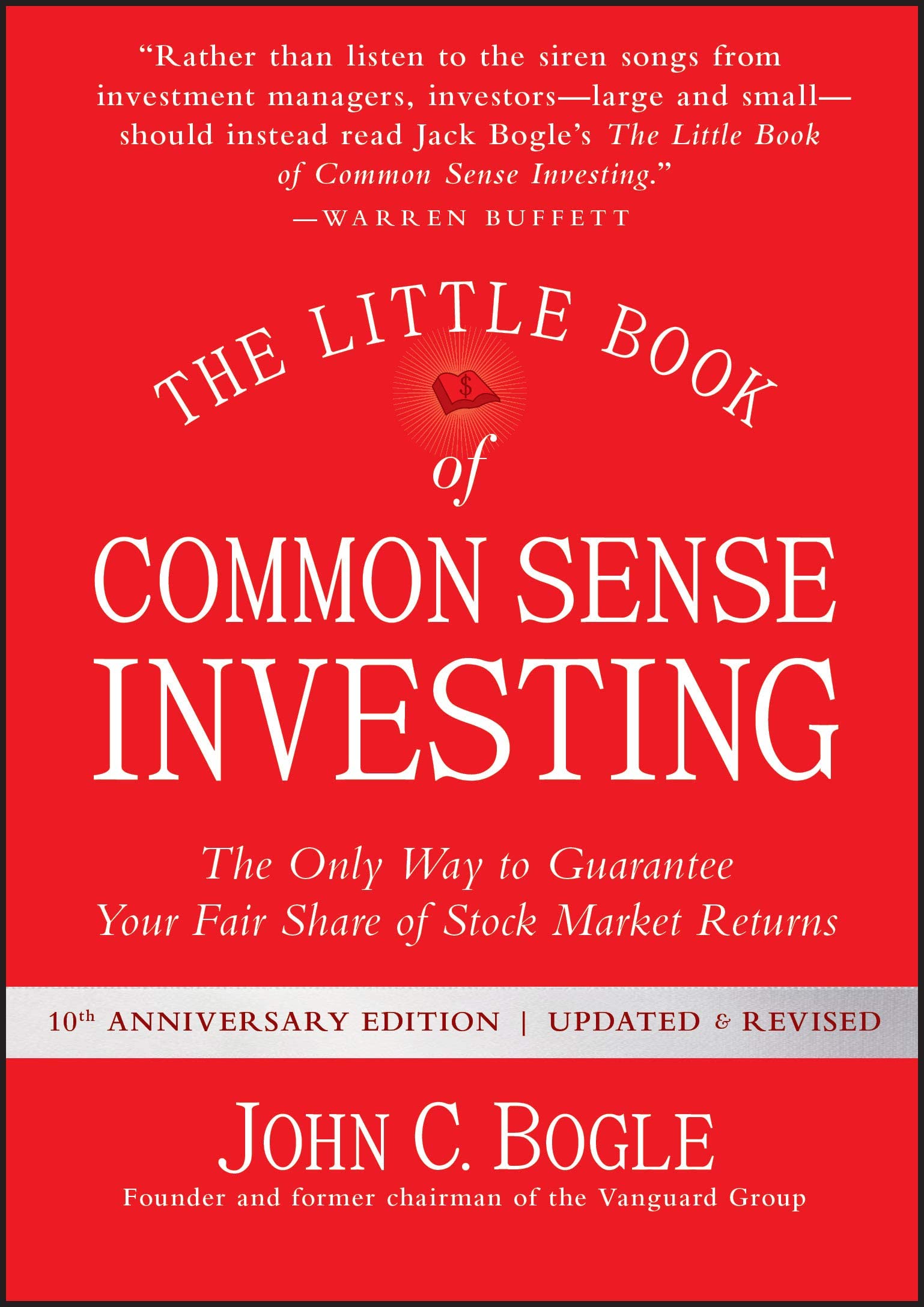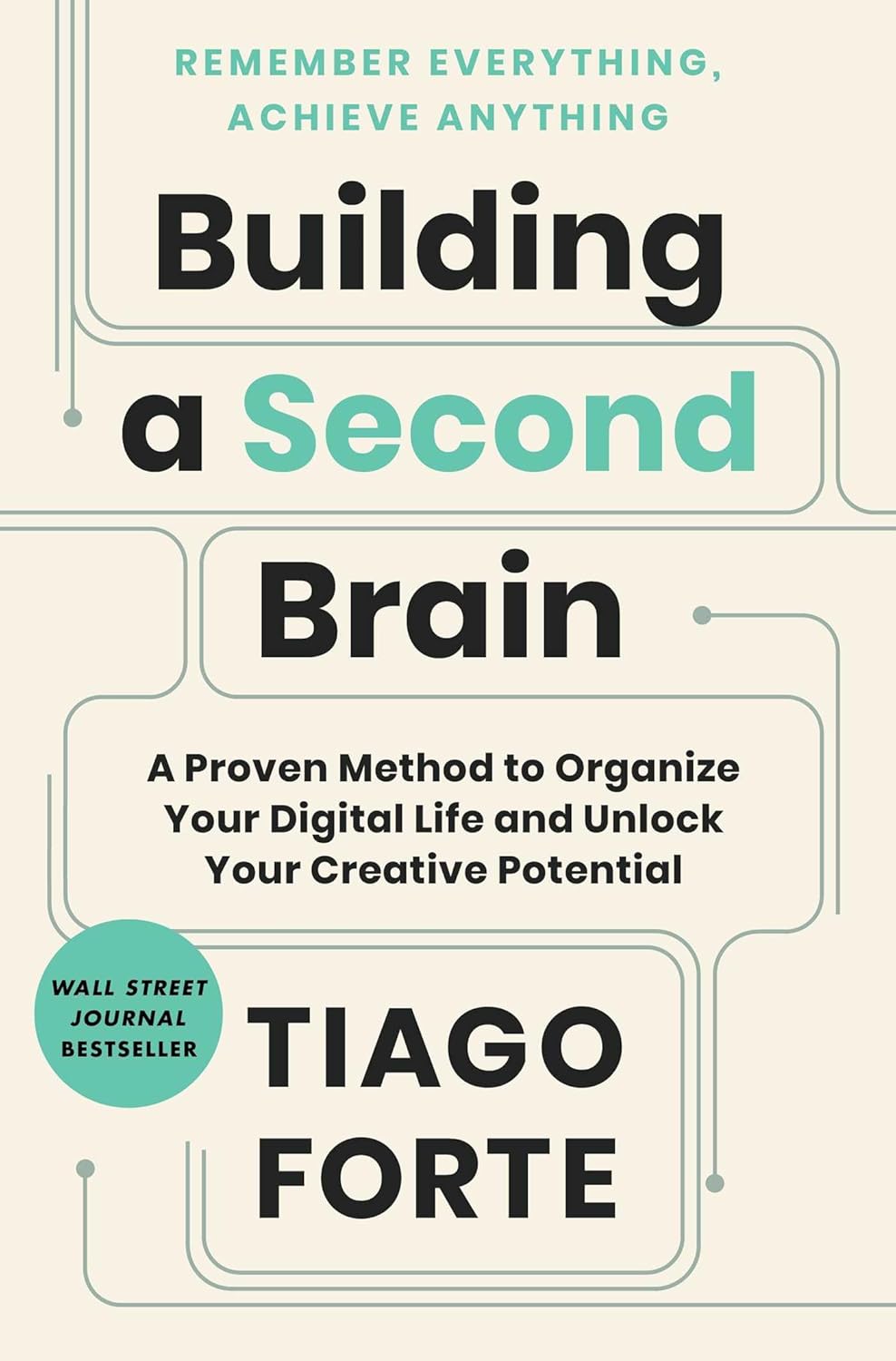
Buy The Book
Chapter
- ✦ Preface
- ✦ The Siren
- ✦ The Rake
- ✦ The Ideal Lover
- ✦ The Dandy
- ✦ The Natural
- ✦ The Coquette
- ✦ The Charmer
- ✦ The Charismatic
- ✦ The Star
- ✦ The Anti-Seducer
- ✦ Phase One: Separation—Stirring Interest and Desire
- ✦ Phase Two: Lead Astray—Creating Pleasure and Confusion
- ✦ Phase Three: The Precipice—Deepening the Effect Through Extreme Measures
- ✦ Phase Four: Moving In for the Kill
Art of Seduction: An Indispensible Primer on the Ultimate Form of Power

About
Robert Greene, an American author renowned for his explorations of power and human behavior, delves into the intricate psychology of attraction in *The Art of Seduction* (2001). With a background in classical studies, Greene synthesizes historical and literary examples—from Cleopatra to John F. Kennedy—to dissect the timeless strategies of influence.
The book frames seduction as a strategic game of psychological manipulation, transcending romance to encompass social and political dynamics. Greene identifies archetypal seducers, such as the enigmatic *Siren*, the charismatic *Charmer*, and the elusive *Coquette*, each employing tactics tailored to exploit human desires and vulnerabilities. He outlines a four-phase process: sparking interest, fostering emotional dependency, deepening tension, and securing surrender, emphasizing mystery, emotional resonance, and calculated vulnerability.
While controversial for its amoral approach, *The Art of Seduction* offers a provocative lens into the mechanics of persuasion, appealing to readers in business, relationships, and leadership. Critics argue it promotes manipulation, yet admirers value its insights into human psychology and power dynamics, cementing its status as a modern classic on influence.

Spark
Learn
Review
✦ Preface
Power dynamics have shifted dramatically over the centuries, evolving from brute force to the subtle art of seduction. Historically, women lacked the means to influence men politically or socially, often relegated to submissive roles. However, some women, like Cleopatra and Helen of Troy, discovered that they could wield power through seduction, captivating men by appealing to their deepest desires. By embodying a fantasy and creating an alluring presence, these women transformed their vulnerability into strength. They learned to manipulate men’s fantasies and emotions, drawing them into a world of pleasure and intrigue.
This preface outlines the transition from physical dominance to psychological manipulation in seduction. Men began to adopt feminine strategies, blending appearance with eloquent language to charm women. As society evolved, seduction became a tool for social maneuvering among courtiers and political figures. Today, seduction is essential in all aspects of life, from personal relationships to professional interactions. It requires an understanding of psychology and the ability to create desire without overt force.
The Art of Seduction serves as a guide to mastering this complex interplay of attraction and influence. It emphasizes that anyone can become a skilled seducer by recognizing their unique qualities and understanding the emotional needs of others. By exploring the archetypes of seduction and the techniques involved, one can unlock the profound power inherent in this timeless art form.
✦ The Siren
Radiate an enchanting aura through calculated theatricality and multisensory allure, transcending mere physical beauty. Craft an intoxicating presence by blending deliberate movement—slow, swaying motions that suggest hidden rhythms—with melodic speech and curated aesthetics. Adorn yourself in textures that beg to be touched, like silk or velvet, and use layered perfumes that linger like unspoken promises. Historical sirens like Cleopatra weaponized spectacle: lavish Nile barges, mythological roleplay, and sudden emotional shifts overwhelmed targets. Modern iterations might use ambient lighting, hushed tones, or tactile details (a brushed hand, a whispered secret) to create hypnotic environments. Distract with opulence and unpredictability—stage entrances that command silence, then vanish before fascination wanes. Blend innocence with sensuality: reveal just enough to hint at forbidden pleasures while maintaining unattainability. Master strategic vulnerability—a fleeting tear or bashful glance amplifies mystique, making admirers hunger to “rescue” you. Embody danger through mercurial shifts: warmth dissolves into detachment, laughter into solemnity. Sustain power by remaining psychologically elusive; let lovers project fantasies onto your curated persona while guarding your core. The Siren’s voice—sweet, unhurried, with a hypnotic cadence—lulls logic into obsession. Her allure lies not in beauty alone but in the art of transforming reality into a dreamscape where desire eclipses reason. Cleopatra’s genius lay in her ability to oscillate between goddess and mortal, leaving Caesar and Antony ensnared in a labyrinth of pleasure and politics. Her legacy teaches that the Siren’s power thrives in ambiguity—an ephemeral dance between presence and absence, intimacy and mystery. Even in defeat, her final act—theatrically clasping a venomous asp—ensured her legend as the ultimate seductress who weaponized mortality itself.
✦ The Rake
Embrace relentless pursuit as performance. Words become scalpels—flattery sharpened by wit, poetry veiling predation. Historical rakes like Casanova thrived on reputation: whispered conquests framed each target as a trophy. Balance ardor with indifference—lavish attention followed by unexplained absence stokes addictive uncertainty. Modern rakes deploy digital intimacy: late-night texts charged with implication, social media breadcrumbs hinting at shared secrets. Revel in transgression: transform trysts into illicit theater, positioning yourself as both villain and liberator. Study vulnerabilities—mirror the neglected wife’s thirst for rebellion or the idealist’s hunger for forbidden wisdom. Use intense eye contact that silences rooms, touch that lingers half a heartbeat too long, laughter timed to dissolve resistance. The Rake’s magnetism lies in audacity: he thrives on the thrill of the chase, making surrender feel like mutual discovery. Mask ambition as spontaneity; let targets believe they’ve tamed a wild heart. Key tools include a reputation for danger and a dash of self-deprecation—confessing past heartbreaks to evoke empathy. The Rake’s power is cyclical: each conquest fuels his legend, drawing new victims into the orbit of his insatiable appetite. Take inspiration from the Duke de Richelieu, whose teenage bravado at Louis XIV’s court saw him charm duchesses and survive scandals, proving that relentless confidence and a hint of roguish vulnerability make resistance futile. His audacious pursuit of the unattainable—whether a queen or a rival’s spouse—cemented his legacy as a man who turned taboo into triumph.
✦ The Ideal Lover
Become a living mirror, reflecting unmet yearnings with surgical precision. Research obsessively: uncover childhood dreams buried under adult pragmatism, then embody them through tailored symbology. For the starved artist, arrive with a sketchbook under moonlight; for the jaded intellectual, quote Kierkegaard over absinthe. Historical Ideal Lovers like Lord Byron wove personal mythologies through poetry and scandal. Elevate mundane moments into mythic tableaux—picnics become bacchanals, arguments transform into debates on existentialism. Cultivate an air of fated connection: share “coincidental” parallels in life stories, deploy meaningful silence that invites projection. Withdraw strategically—cancel plans with cryptic melancholy, letting absence inflate your legend. Balance accessibility with enigma: share vivid childhood memories but veil present motivations. Anchor devotion by becoming the missing puzzle piece in their self-narrative—the catalyst for their “true” awakening. Modern iterations curate Spotify playlists that “accidentally” mirror a target’s inner world or send annotated books with underlined passages that feel eerily personal. The Ideal Lover’s genius lies in making the target feel uniquely seen, yet always yearning to unravel the mystery behind the mask. Casanova mastered this by blending intellectual intimacy with fleeting vulnerability, ensuring each lover believed herself his muse—even as he penned memoirs of a thousand conquests. The Ideal Lover’s power lies in their ability to resurrect dormant fantasies, making the target’s deepest desires feel not just possible, but inevitable.
✦ The Dandy
Defy categorization through studied ambiguity. Merge eras and genders—Victorian cravats with cyberpunk goggles, baroque lace against razor-sharp tailoring. Historical dandies like Beau Brummell weaponized minimalism; modern iterations embrace maximalist irreverence—neon kimonos paired with combat boots. Transform vanity into avant-garde statement: dye hair metallic hues, commission fragrances smelling of burnt parchment. Master provocative detachment: dissect trends with languid wit while others clamor for attention. Let every accessory whisper paradox—a pocket watch engraved with anarchist symbols, roses dipped in black enamel. Cultivate eccentric rituals: smoke clove cigarettes from a 1920s holder, quote obscure films mid-conversation. Challenge norms through subtle sabotage—wear white to funerals, applaud sarcastically at pretentious galleries. The Dandy’s power lies in ambiguity: collectors of the bizarre adore your chaos, traditionalists dissect your “message,” yet you remain gloriously indecipherable. Become a walking Rorschach test, inviting projections while revealing nothing. Oscar Wilde epitomized this, turning self-obsession into art with epigrams that dazzled and disarmed. The Dandy’s allure is intellectual seduction—turning futility into fashion, making every gesture a critique of conformity. Modern dandies like David Bowie mastered reinvention, using personas like Ziggy Stardust to blur reality and fantasy, proving that identity itself is the ultimate costume.
✦ The Natural
Exude artless authenticity through curated spontaneity. Master the disarming grin, the head-tilted curiosity of a child discovering rain. Create safe spaces by shedding social armor first—share “embarrassing” stories to invite vulnerability. Balance wide-eyed wonder with primal cunning: laugh uproariously at your own jokes, then pivot conversations into intimate confessions. Dress in tactile textures—soft knits, flowing linen—that invite touch and suggest uncomplicated comfort. Historical Naturals like F. Scott Fitzgerald’s Daisy Buchanan weaponized girlish charm; modern versions use hiking trips or campfire singalongs to bypass defenses. Deploy strategic naivety—ask probing questions masked as innocent curiosity, reward revelations with radiant approval. Counterintuitively, reveal minor flaws (a clumsiness, terrible taste in music) to enhance relatability. Your power lies in nostalgia—a temporary escape from adulthood’s performative burdens. The Natural’s genius is making calculated artlessness feel like refuge, transforming interactions into nostalgic escapes where cynicism melts into childlike trust. Marilyn Monroe perfected this duality: her breathy voice and playful demeanor masked a sharp intellect, allowing her to disarm critics and admirers alike. By framing innocence as strength, the Natural turns simplicity into seduction’s deadliest weapon. Audrey Hepburn’s elfin charm, blending elegance with whimsy, further illustrates how curated spontaneity—a picnic on the Roman cobblestones, a sudden dance in *Funny Face*—can make the mundane magical.
✦ The Coquette
The Coquette embodies the art of seduction through the mastery of **delayed gratification**. This figure thrives on creating a tantalizing ebb and flow of desire, skillfully alternating between warmth and coolness to keep admirers in a state of suspense. Each interaction is a carefully orchestrated game, where the promise of reward hangs just out of reach, making the target yearn for more. By maintaining an air of mystery and emotional distance, the Coquette captivates attention and stirs deep longing.
To achieve this, one must develop a **self-sufficient demeanor**, exuding confidence that draws others in while simultaneously keeping them at bay. The Coquette’s charm lies in her ability to make others feel special while ensuring that she remains elusive. This figure often employs mixed signals, combining flirtation with moments of withdrawal to create intrigue. The more elusive the Coquette appears, the more her admirers are compelled to pursue her.
Historical figures like **Clara Bow** exemplify this archetype, using their allure to ensnare those around them. The Coquette knows how to wield her power effectively—she understands that by keeping her admirers guessing, she maintains control over the dynamic. This dance of desire ensures that those captivated by her charm remain in a constant state of pursuit, eager to win her affection. Ultimately, the Coquette thrives on the thrill of seduction itself, turning emotional games into an art form that leaves her targets entranced and desperate for her attention.
✦ The Charmer
Charm operates as a form of seduction devoid of overt sexuality; it is about creating an atmosphere of pleasure and comfort. A Charmer excels at making others feel valued and understood, often deflecting attention away from themselves to focus entirely on their target. This approach fosters a sense of intimacy and connection that disarms defenses and invites deeper engagement.
To become a Charmer, one must master the art of **emotional intelligence**, honing the ability to read others’ moods and adapt accordingly. This involves practicing “mirror listening,” where you reflect back what others express, making them feel heard and appreciated. Flattery becomes an essential tool; subtle compliments can elevate someone’s self-esteem and create a bond based on admiration.
Historical figures such as **Talleyrand** exemplify this archetype by skillfully navigating social dynamics with grace. Charmers know how to create a mood that encourages openness—by sharing light-hearted stories or engaging in playful banter, they foster an environment where vulnerability feels safe.
The key to charm lies in genuine interest; when you focus on making others feel good about themselves, you naturally attract them closer. This method not only enhances your appeal but also allows you to build rapport effortlessly. Ultimately, being a Charmer means cultivating an aura that makes people want to be around you, transforming ordinary interactions into delightful experiences.
✦ The Charismatic
Charisma is defined by an inner quality that captivates those around you—self-confidence, sexual energy, and a strong sense of purpose radiate from charismatic individuals. This magnetic presence excites others and draws them in, creating an aura that feels both extraordinary and superior. Charismatics learn to amplify their allure through piercing gazes, passionate oratory, and an air of mystery that keeps others intrigued.
To embody charisma effectively, one must cultivate **intensity** while maintaining emotional detachment. This balance allows for genuine connections without appearing overly invested or needy. Charismatic individuals often possess a natural ability to engage others through storytelling or compelling conversation; their words resonate deeply because they convey passion and conviction.
Historical figures like **Rasputin** exemplify this archetype by mesmerizing audiences with their presence alone. They understand how to heighten their charisma through body language—subtle gestures or lingering touches can enhance emotional connections without crossing boundaries.
Creating an illusion of depth is crucial; charismatic individuals often leave others wanting more by remaining slightly enigmatic. They thrive on creating suspense—keeping people guessing about their true feelings or intentions adds layers to their allure.
Ultimately, charisma is about radiating confidence while fostering genuine connections with others. By embodying this quality, one can inspire admiration and loyalty among those drawn into their orbit.
✦ The Star
Stars captivate through their ethereal presence and distinctive style, standing out in any crowd. They feed on society’s longing for escape from daily life’s harsh realities by projecting an image that is both alluring and unattainable. Stars possess an air of mystery that invites fascination; they embody dreams and fantasies that resonate deeply with people’s desires for adventure and excitement.
To become a Star, one must cultivate a **unique persona**, characterized by striking aesthetics and intriguing narratives. This involves developing signature styles—clothing choices or mannerisms—that set you apart from others while evoking curiosity. Stars often create an enigmatic aura by maintaining some distance from their admirers; this allows people to project their fantasies onto them.
Historical icons like **Greta Garbo** exemplified this archetype by crafting an elusive image that captivated audiences globally. Their ability to remain slightly out of reach enhances allure; fans feel compelled to chase after something they can never fully possess.
Moreover, Stars thrive on creating enchanting experiences—whether through performances or public appearances—that leave lasting impressions on those who encounter them. Their dreamlike quality works on the unconscious level, drawing people into their orbit while keeping them at arm’s length.
Ultimately, becoming a Star involves embracing your uniqueness while allowing your presence to evoke wonder and fascination in others. By projecting an image filled with intrigue and allure, you can become a beacon of desire in any setting.
✦ The Anti-Seducer
The Anti-Seducer represents everything contrary to the art of seduction; they repel rather than attract through insecurity and self-absorption. These individuals lack awareness of social dynamics and often monopolize conversations with unsolicited personal tales or complaints. Their inability to connect emotionally leaves potential admirers feeling drained instead of enchanted.
To identify Anti-Seducers is crucial; they exhibit traits such as neediness or excessive self-focus that undermine their appeal. Their conversations tend to revolve around themselves without regard for others’ feelings or interests—this behavior creates discomfort rather than intimacy.
Recognizing these qualities within oneself is equally important; it allows for personal growth and improvement in social interactions. By rooting out Anti-Seducer tendencies—such as excessive bragging or emotional manipulation—you can enhance your overall allure.
Historical examples include characters like **Malvolio**, who embody self-importance without charm or empathy. These figures often fail because they cannot grasp the psychology behind attraction—they are oblivious to how their behavior affects those around them.
Ultimately, overcoming Anti-Seducer traits requires cultivating self-awareness and empathy toward others’ emotions. By shifting focus outward rather than inward, one can foster genuine connections that draw people closer instead of pushing them away. Embracing vulnerability while avoiding desperation will enhance your ability to engage meaningfully with potential partners.
✦ Phase One: Separation—Stirring Interest and Desire
To initiate the art of seduction, begin by selecting the right target. This involves a thorough understanding of their vulnerabilities and desires. The ideal victim is often someone who feels isolated or dissatisfied, as they are more likely to be susceptible to your charms. Observe them closely to identify what voids you can fill—these could be emotional, social, or psychological gaps that you can exploit.
Once you have identified your target, the next step is to create a false sense of security. Approach them indirectly at first; this means cultivating a neutral relationship before gradually revealing your intentions. This method allows your target to feel comfortable and lowers their defenses, making them more receptive to your advances.
As you progress, it’s crucial to send mixed signals to maintain intrigue. By being unpredictable—exhibiting both warmth and aloofness—you keep your target guessing and engaged. This ambiguity creates a sense of depth and mystery that draws them closer while simultaneously keeping them at bay.
Additionally, appearing as an object of desire is vital. Cultivate an aura of desirability by ensuring that others are drawn to you as well. This not only elevates your status in their eyes but also makes it a point of vanity for them to win your affection away from others.
Finally, create a need within your target by stirring feelings of anxiety and discontent about their current situation. This discomfort will make them more receptive to the idea that you can provide the pleasure or fulfillment they lack, setting the stage for deeper engagement.
✦ Phase Two: Lead Astray—Creating Pleasure and Confusion
Once interest has been piqued, the next phase involves leading your target astray by cultivating confusion and pleasure. Begin by introducing unpredictability into your interactions. This can involve sudden changes in behavior or mood that keep your target guessing about your true intentions. The element of surprise is crucial; it creates excitement and keeps them on their toes.
Use language as a seductive tool—craft messages that are both flattering and ambiguous, allowing room for interpretation. This will engage their emotions deeply, as they will find themselves drawn into a narrative that plays on their desires and insecurities.
In this phase, sensory experiences become paramount. Create an atmosphere filled with tantalizing details—aromatic scents, soft textures, and enchanting sounds—that heighten the emotional stakes of your interactions. By immersing your target in pleasurable sensations, you deepen their emotional investment in you.
Additionally, it’s essential to cultivate an idealized version of yourself that mirrors their fantasies. This reflection makes them feel understood and valued while simultaneously keeping them intrigued by the layers of complexity you present.
Withdraw occasionally to amplify longing; absence can intensify desire. The interplay between presence and absence creates a rhythm that keeps your target emotionally engaged while also fostering dependency on the pleasure you provide.
Finally, ensure that confusion reigns in terms of expectations. By alternating between moments of closeness and withdrawal, you maintain control over the dynamic, making it difficult for them to resist pursuing you further.
✦ Phase Three: The Precipice—Deepening the Effect Through Extreme Measures
As seduction progresses toward its climax, deepen emotional engagement through extreme measures that challenge boundaries. Introduce radical contrasts in behavior—oscillating between tenderness and cruelty—to create a heightened emotional landscape where your target feels both exhilarated and vulnerable.
Isolate your victim from their usual support systems; this makes them more reliant on you for emotional fulfillment. By gradually removing familiar anchors—friends, routines—you create a sense of disorientation that heightens their dependence on your presence.
Engage in experiences that evoke strong emotions or challenge societal norms. Transgressive acts can forge bonds through shared guilt or excitement, making the act of seduction feel like an adventure into forbidden territory. This shared experience deepens connection while simultaneously making it harder for them to extricate themselves from the situation.
Utilize psychological tactics such as regression; evoke childhood memories or dynamics where they felt safe yet dependent. Position yourself as both protector and disruptor—this duality fosters attachment while also keeping them off-balance.
The key here is to amplify emotional stakes through calculated risks—create situations where they must confront fears or desires they’ve long suppressed. By leading them into these emotional depths, you foster a powerful bond that makes surrender feel inevitable.
Finally, maintain an air of unpredictability throughout this phase; ensure they never fully grasp what drives you or where you stand emotionally. This ambiguity keeps them engaged in a constant state of longing and anticipation.
✦ Phase Four: Moving In for the Kill
As the seduction reaches its climax, it’s time to shift from being the pursuer to becoming the pursued. To do this effectively, create space for your target to initiate action while subtly hinting at waning interest in order to reignite their desire for you. This reversal keeps them on edge; when they feel they might lose you, their pursuit becomes fervent.
Employ physical lures strategically—use body language that invites closeness while maintaining an air of detachment. Your demeanor should exude confidence yet remain slightly elusive; this balance encourages them to close the gap without feeling pressured.
When the moment arrives for decisive action, abandon any semblance of hesitation or doubt. A bold move is essential; this could be a sudden kiss or an intimate gesture that bypasses verbal consent but feels natural within the context you’ve created together.
Post-conquest requires careful navigation; emotions often swing dramatically after physical intimacy has been achieved. To prevent disillusionment or complacency from setting in, employ tactics such as intermittent reinforcement—alternate between warmth and distance to keep their emotions fluctuating between joy and longing.
Ensure that afterglow does not lead to routine; introduce elements of surprise even after intimacy has been established. Create scenarios where they must continue earning your affection or attention, thus preserving the thrill of pursuit.
Ultimately, seduction is about maintaining an ongoing dance between pleasure and pain—a cycle where each high is met with a low that keeps desire alive and ensures that surrender never solidifies into complacency or predictability.
For People
– Aspiring pickup artists
– Professionals in sales or marketing
– Individuals interested in psychology and human behavior
– History enthusiasts
– Those seeking to enhance their charisma and social skills
Learn to
– Understanding the psychology of attraction
– Learning effective persuasion techniques
– Developing emotional intelligence in relationships
– Recognizing different seduction archetypes and their strategies
– Enhancing interpersonal skills for personal and professional contexts









